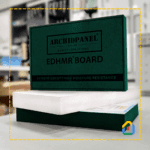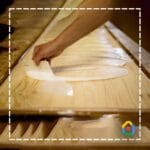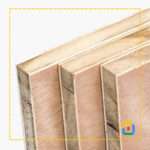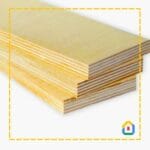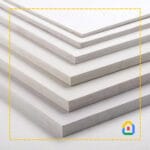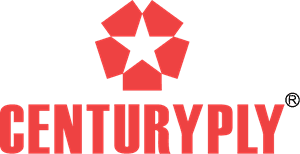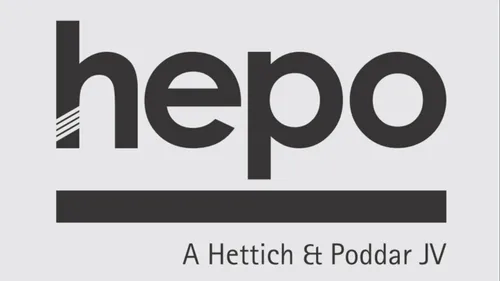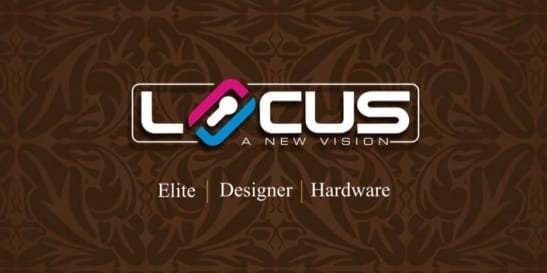Every country thrives on construction and in such, many materials and technologies are needed. Even if the completed buildings and structures are more appealing to the eye, there are sometimes neglected parts of construction that must never be overlooked. In this case, it is the Shuttering Plywood, a very important element that holds structures together providing the required accuracy and support during the early stages of concrete’s construction. So on this occasion, we will be discussing the Shuttering Plywood of India, its features, purposes, grades, benefits and so on.
Shuttering Plywood
What do you mean by Shuttering Plywood?
For the reinforcement of beams, columns, formers, walls and structural slabs, Shuttering Plywood is used whose others may as well refer to formwork plywood. It is the aluminium or timber scaffold that is used while pouring concrete into the shape of the structure. Shuttering Plywoods construct, support, and finish the necessary concrete elements that are columns, beams, slabs and walls during the process of construction so it is very important.
Material Shuttering Plywood Composition
Shuttering Plywood possesses the following attributes which make it suitable for use in concrete formwork :
For Plywood, which is also referred to as Shuttering plywood, several layers or plies are composed of a sheet of veneer wood. However, these veneers are made of tough hardwoods, allowing them to endure a large amount of pressure from wet concrete.
WLG eliminates moisture on the plywood bonding surface, and a phenol-formaldehyde resin is used to bond the shuttering plywood’s edges. This adhesive has been proven in studies to withstand moisture, making it a primary reason why the plywood remains durable amid harsh wet concrete conditions.
Manufacturing Process
The marine-grade plywood used for shuttering has been manufactured to precise specifications for use in concrete formwork:
Only the finest quality timber veneer sheets with adequate strength, thickness, and waterproof properties are selected for the plywood formation process.Gluing: The plies are permanently bonded together by gluing veneer sheets with phenol-formaldehyde adhesive which is water and heat resistant. Layer Arrangement: In order to achieve uniformity of strength and prevent warping or delaminating, the adhesive coated sheets are arranged in a definite manner. Pressing: Beginning the process, the stack of veneer is placed in a hydraulic press, applying extreme pressure along with heat. This helps the glue to bond the plies, so that the plywood sheet will be firm, thick, and true to size. Cutting and Finishing: After the formation of the Shuttering Plywood sheets, the sheets are cut into required dimensions, sanded well and trimmed for any imperfections.
Grades of Shuttering Plywood
In India, Shuttering Plywood is classified into several grades according to specific criteria such as its strength, ease of use, and number of times it can be reused. The grades which are popularly used include:
1. MR Grade (Moisture Resistant)
MR Grade Shuttering Plywood is used in places where there is little or no exposure to moisture. It is generally suitable for internal concrete formworks and it is waterproof to an extent.
2. BWR Grade (Boiling Water Resistant)
Shuttering plywood of BWR grade is suitable for external use where moisture exposure is high. Whatever be the occasion that it has been splashed with very low impact, it could sustain it.
3. BWP Grade (Boiling Water Proof)
This type is water resistant and is majorly utilized in areas where water is copious and predominant. Generally it is used in building of marine structures and humid areas.
Advantages of Shuttering Plywood
Shuttering Plywood is widely preferred because of its enhanced features and abilities that many construction firms simply cannot do without:
1. Strength and Durability
It has been constructed to resist when concrete is poured and during the hibernation of the concrete in order to take complete shape.
It retains its shape even under severe conditions and construction processes.
Dimensional Stability: Keeping the Shape
Shuttering Plywood does not warp or expand; hence concrete doesn’t take up more shape than intended.
Before commencing construction, it is advisable to erect wooden patrols at an angle. Once the sheet is bent, it makes the future molding and tying much easier.
Using this sort of plywood avoids creating a pore insert, which would weaken the concrete surface. It prevents the endpoint from being left exposed so the view looks better.
Depending on the grade and care, it may be possible to reuse shuttering panels for other constructs. Its first virtue contributes a lot to improving the ecology. The same factors reduce removal time costs and make shuttering profitable.
Chemical compounds contained in concrete do not affect shuttering plywood of at least BWP grade. The components retain their important characteristics during the curing process.
6. Handling Method
When compared with steel and timber formwork materials, shuttering plywood is lighter, portable and work-friendly, allowing for labor and construction time savings.
7. Economy
Shuttering plywood is an economical redevelopment formwork as it provides imperformance at a reasonable cost.
Uses Of Shuttering Plywood
Shuttering plywood has wide applications in building purposes such as:
1. Columns and Beams
Shuttering plywood is applied for the formwork of casting column and beams. Its strength and dimensional stability are of the utmost importance in the making of accurate and load bearing structural elements.
2. Slabs and Floors
Shuttering plywood acts as a temporary mold in the construction of slabs and floors that holds the wet concrete in position until it has set and is sufficiently cured.
3. Walls
Shuttering plywood is also required in the construction of walls and is placed in due formwork in which wet concrete is poured.
It makes sure that the walls have the necessary straightness and smoothness, as well as the intended appearance.
4. Staircases
For forming staircases and their treads, risers and landings, Shuttering Plywood is used to form a skeleton.
5. Bridges and Infrastructure
In infrastructure work during bridge building, Shuttering Plywood is employed to construct intricate formworks for the structural elements.
6. Architectural Features
In architectural works, Shuttering Plywood is used for casting diverse striking concrete works such as concrete retaining walls, concrete facades, and concrete ornaments.
7. Tunneling and Underground Construction
In tunneling and underground construction, Shuttering Plywood is adopted for use in formwork for tunnel lining and other buried structures.
Maintenance and Care
Shuttering Plywood can be used for a longer period and will give its best results if appropriate maintenance and care is taken:
- Cleaning: After each instance of usage, it is advisable to wash down the Shuttering Plywood to get rid of any concrete, dirt or debris. A scrapper, brush or comb can be used for scrubbing and water rinsing, whenever required.
- Drying: It is important to make sure that the Shuttering Plywood has been thoroughly dried after washing to avoid any instances of mold or mildew formation.
- Storage: Shuttering Plywood should be kept in a clean, dry and well-aerated place, preferably flat. When it is raised above the ground, moisture is less likely to be absorbed.
- Repairs: A thorough examination of the Shuttering Plywood must be carried out before every usage, as there should not be any chips, warps, curled edges or similar structural defects. If certain areas are damaged, they can be fixed or replaced to sustain the integrity of the formwork.
- Release Agents: Prior to the pouring of concrete, it is necessary to place a suitable release agent onto the surface of the Shutter to avoid binding of surfaces and to permit ease of the removal.
Summary
Even though a completed construction detail could be a splendid building or infrastructure development, the same quite often hides the abutment of these components.
Shuttering Plywood is strong, tough, and precise as it provides the invisible structure on which these structures are built. In India, where infrastructure development is in full swing, Shuttering Plywood is important for maintaining the competent and decorative aspects of concrete structures. Even as the country builds up its feet, Shuttering Plywood is still an unsung hero of the building industry, working in silence for the advancement of the economy.

